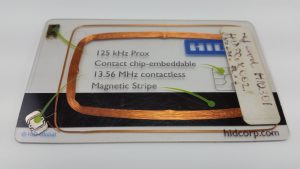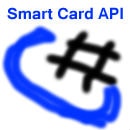What's a Smart Card ?
Smart card ? What is it ? What makes a smart card smarter than other cards.
Imagine the power of a computer, the speed and security of electronic data, and the freedom to carry that information anywhere on Earth.
Imagine a computer so small it fits inside a plastic card the same size as any credit card you carry in your wallet. Imagine the smart card !
Smart card developers and marketing experts have many choices of smart card system design, including:
- Multi-application smart cards
- Single-application programmable chipcards
- Smart cards with a fixed set of functions
- Secure memory cards
Smart Card Evolution
Information technology is evolving at an amazing pace. Personal computers, tablets and smart phones are in the hands of millions of people worldwide.
Interest in smart card technology soared in Europe in the 1990s, and since then the number and variety of smart card-based applications have increased around the world.
Some factors driving the growing interest in smart cards include the declining cost of smart cards and the growing concern that magnetic stripe cards cannot provide the protections necessary to thwart fraud and security breaches.
The security issue alone may propel smart card technology to the forefront of business transactions.
Most recently there has been an increasing demand to make the Internet of Thing (IoT) more like an Internet of Trust and we believe that chip card technology is ideal for this.
Microprocessor Card
The microprocessor smart card is defined as an IC chip with microprocessor and memory. It is either accessed through contacts or radio frequency.
If embedded in a credit card size card, this smart card contains a dime-sized smart card module that can process and store thousands of bits of electronic data.
Smart card chips (ICs) can be as small as the tip of a pen, allowing integration in small devices.
Unlike passive devices (such as a memory card or magnetic stripe card) that can only store information, the microprocessor smart card is active and able to process data in reaction to a given situation.
This capability to record and modify information in its own non-volatile, physically protected memory makes the smart card a powerful and practical tool.
- Easy-to-use chip card integration with .NET library
with C# and VB.NET sample code for Mifare, DESFire EV1, JavaCard, KVK, eGK, SIM, PIV, CAC, HID Prox, iCLASS, SEOS and many more
Smart Card Types
The term “smart card” is loosely used to describe any card that holds application data. This may even include magnetic stripe cards, optical cards or QRC cards. If not otherwise noted, CardWerk refers to chip cards as smart cards, only including cards with embedded memory and, on the very smart end, a CPU and crypto processor (a/k/a microprocessor card).
Magnetic Stripe Cards
A magnetic stripe card has a strip of magnetic tape material attached to its surface. This is the standard technology used for bank cards and can only store data which cannot be updated. This type of cards may contain anti-counterfeit mechanisms such as magnetic fingerprint or masks, however, mag stripe cards are fixed response devices with data that won’t change in the field.
Optical Cards
Optical cards use some form of laser to read and write to the card. The U.S. Gov issued “Green Card” for example has optical storage capability. Simply put it pretty much acts like a DVD on a strip and requires highly proprietary equipment to access data stored on such card.
Memory cards
Memory cards can store a variety of data, including financial, personal, and specialized information, but cannot process information. Data may be encrypted outside the card. Some memory cards have hard-wired logic to implement access conditions such as read-only, read/write access or enforce irreversible bit-level write access used for ticketing or metering applications.
Microprocessor cards
Smart cards with microprocessors (CPU, crypto-controller) look like standard plastic cards, but are equipped with an embedded Integrated Circuit (IC) chip. They can store information, carry out local processing on the data stored, and perform complex calculations such as cryptographic operations necessary for mutual authentication, session key generation, data signing and more. These cards take the form of either “contact” cards or “contactless” cards which use radio frequency signals to operate. Either require a card reader to access data.
Proximity and Contactless cards
125KHz PROX cards are mostly used for physical assess control systems. They are pretty much memory cards with an antenna. Communication is via coupled antennae and proprietary I/O over PSK, FSK or ASK modulation modes. The are currently being replaced by more secure and standardized 13.56 MHz technologies namely ISO 14443 and ISO 15693. Improvement in power consumption during the past 15 years make contactless with on-board crypto controllers available. So from this point of view you can do anything you can do with a sophisticated contact PKI card.


